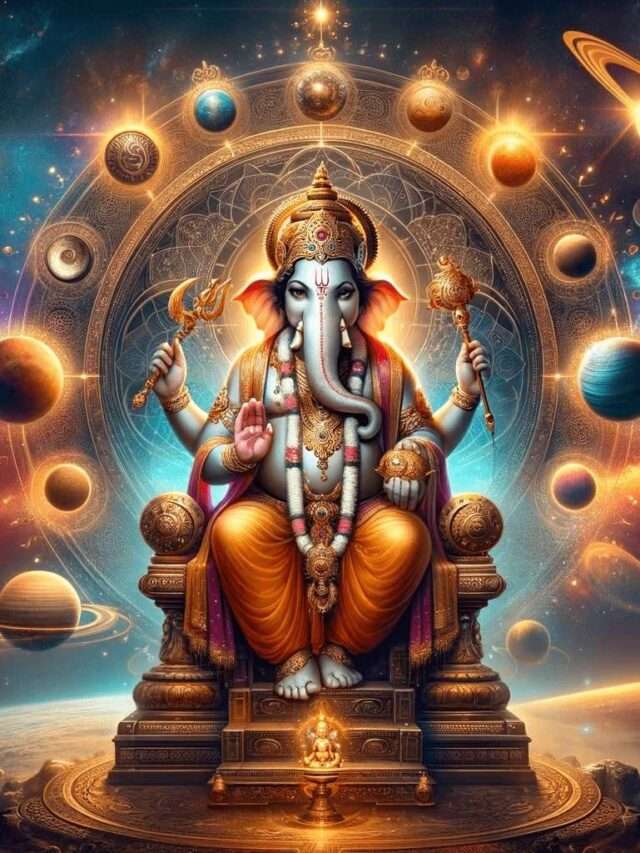ततः श्वेतैर्हयैर्युक्ते महति स्यन्दने स्थितौ।
श्रीमद्भगवद्गीता 1.14
माधवः पाण्डवश्चैव दिव्यौ शङ्खौ प्रदध्मतुः।
Tatah Shvetailhayairyukte Mahati Syandane Sthitau
Shrimad Bhagavad Gita 1.14
Madhavah Pandavashchaiva Divyau Shankhau Pradadhmatuh
Then, seated in their magnificent chariot yoked with white horses, Lord Krishna and Arjuna blew their divine conch shells.
English Translation of BG 1.14
This verse from the Bhagavad Gita encapsulates a moment of divine intervention on the battlefield of Kurukshetra. As Lord Krishna and Arjuna, seated in a chariot drawn by celestial white horses, sound their divine conch shells, it signifies not just the commencement of a historic battle but also the unfolding of a cosmic play.
Insights into BG 1.14: Reflecting on Swami Ramsukhdas Ji’s Divine Commentary
Divinity in Unity
The image of Krishna and Arjuna together on the chariot, with Krishna as the charioteer and Arjuna as the warrior, symbolizes the perfect blend of divine guidance and human will. This partnership is a testament to the power of surrendering to the divine while fulfilling one’s duty on earth. It reminds us that when we align our actions with divine will, we become instruments of the cosmic purpose.
The White Horses
The white horses drawing the chariot symbolize purity, wisdom, and speed. These celestial steeds, gifted by the Gandharva Chitrarath to Arjuna, embody the qualities necessary for spiritual progress: purity of intent, wisdom in action, and the swiftness of thought. They remind us that to navigate the battlefield of life, one needs the virtues of clarity, discernment, and agility.
The Divine Conch Shells
The act of blowing the conch shells by Krishna and Arjuna serves as a call to action, a declaration of readiness to fulfill one’s duties. The conch shells, being divine, emit a sound that transcends the physical battlefield, reaching the spiritual realm. This sound symbolizes the eternal message of the Gita: the victory of righteousness over falsehood, light over darkness. It is a call to awaken the spiritual warrior within each of us, urging us to stand firm in our convictions and to act with courage and integrity.
The Role of the Divine Charioteer
Krishna, as the charioteer, symbolizes the guiding divine presence in our lives. His role as Arjuna’s charioteer is a profound metaphor for the divine guidance available to us when we navigate the complexities of life. It teaches us that when we surrender our ego and seek divine guidance, we are empowered to face any challenge with wisdom and confidence.
Conclusion
Verse 1.14 of the Bhagavad Gita is a powerful reminder of the divine presence in the midst of worldly duties. It teaches us the importance of divine-human collaboration, where divine guidance and human action go hand in hand. The blowing of the divine conch shells by Krishna and Arjuna is not merely a signal for the start of the battle but a call to each of us to awaken to our higher purpose, to align our actions with our divine nature, and to embark on the path of righteousness with the guidance of the divine. As we reflect on this verse, let us remember that in the chariot of life, when the divine is our charioteer, no battle is insurmountable, and the path to dharma becomes clear and attainable.



